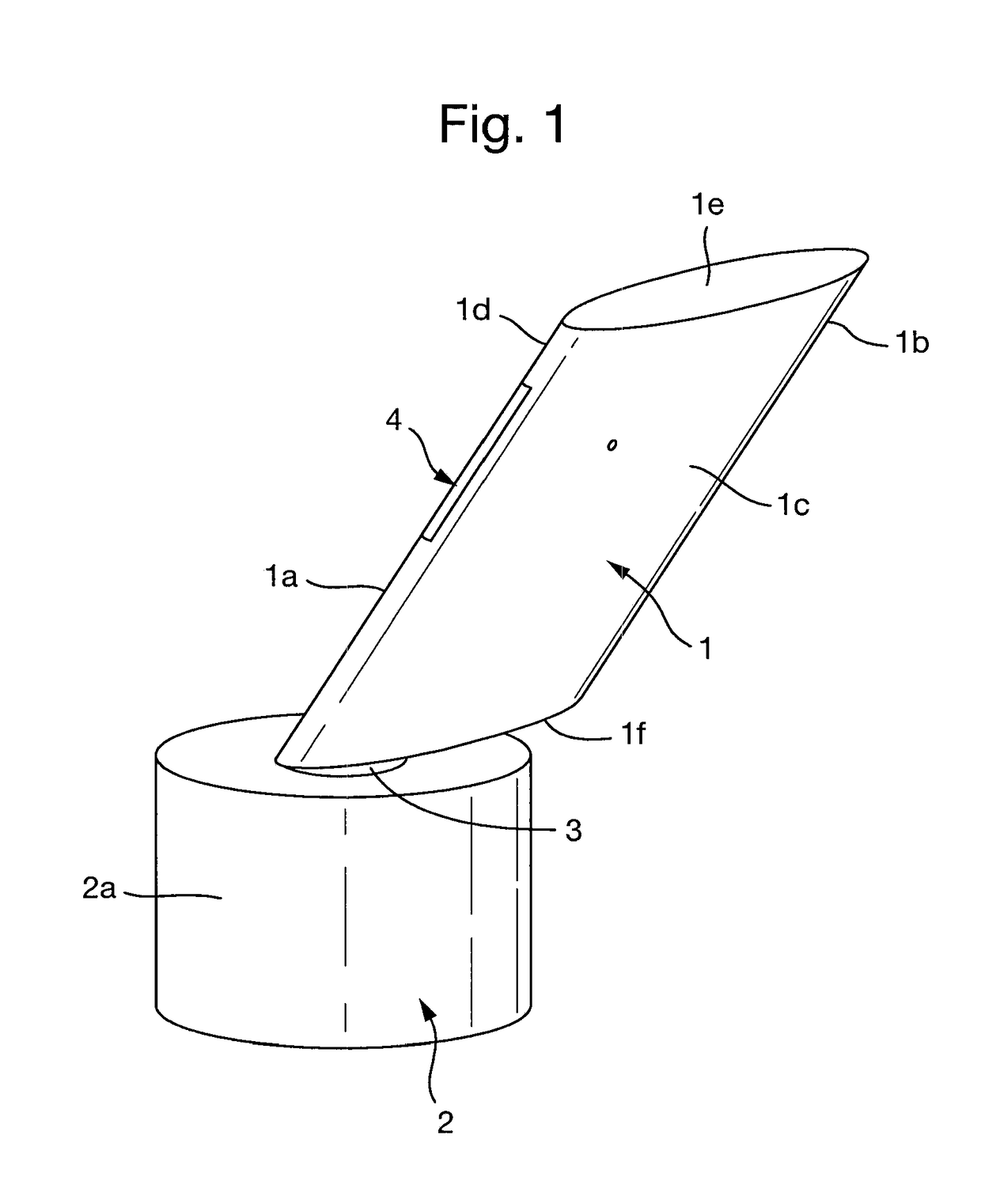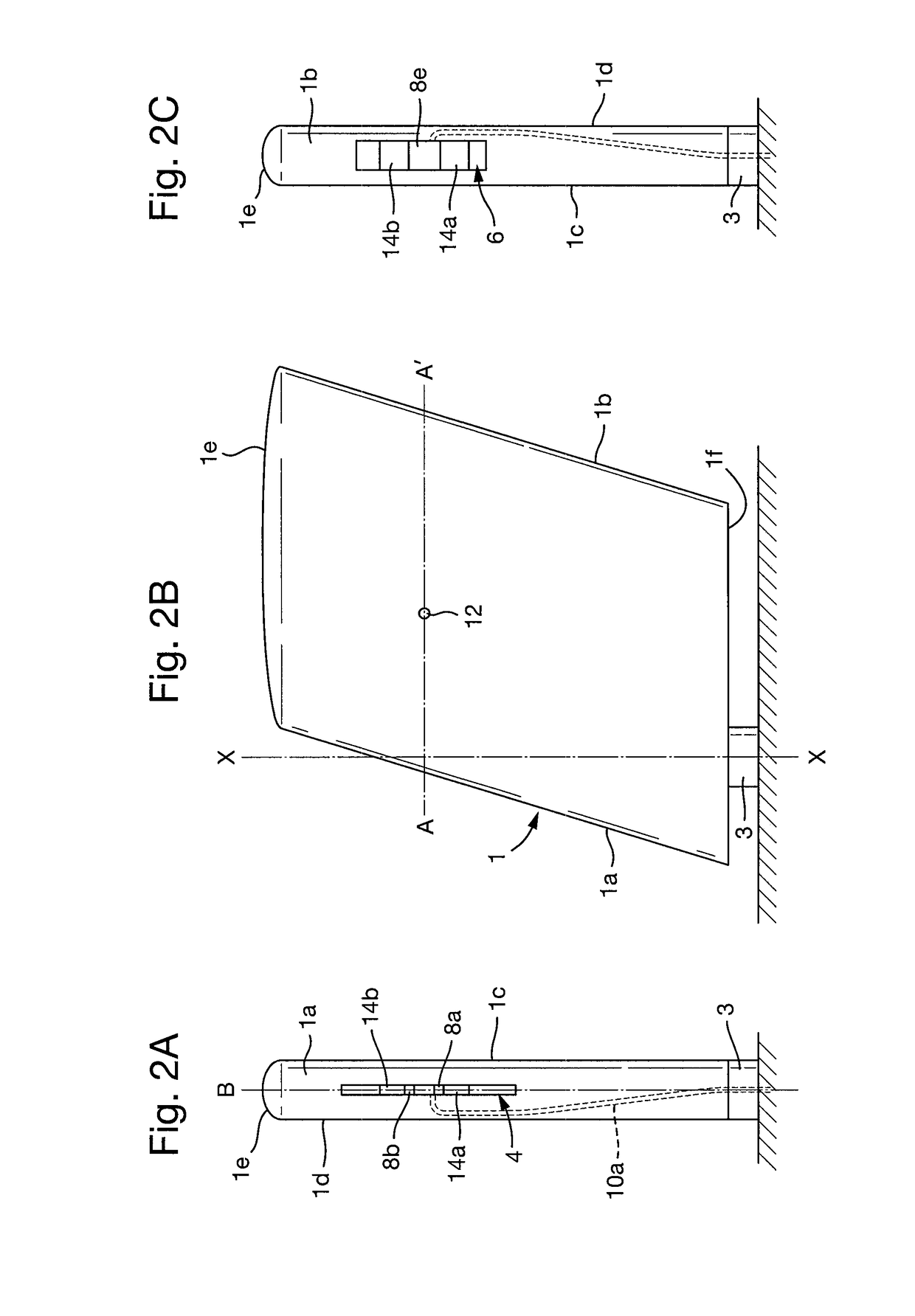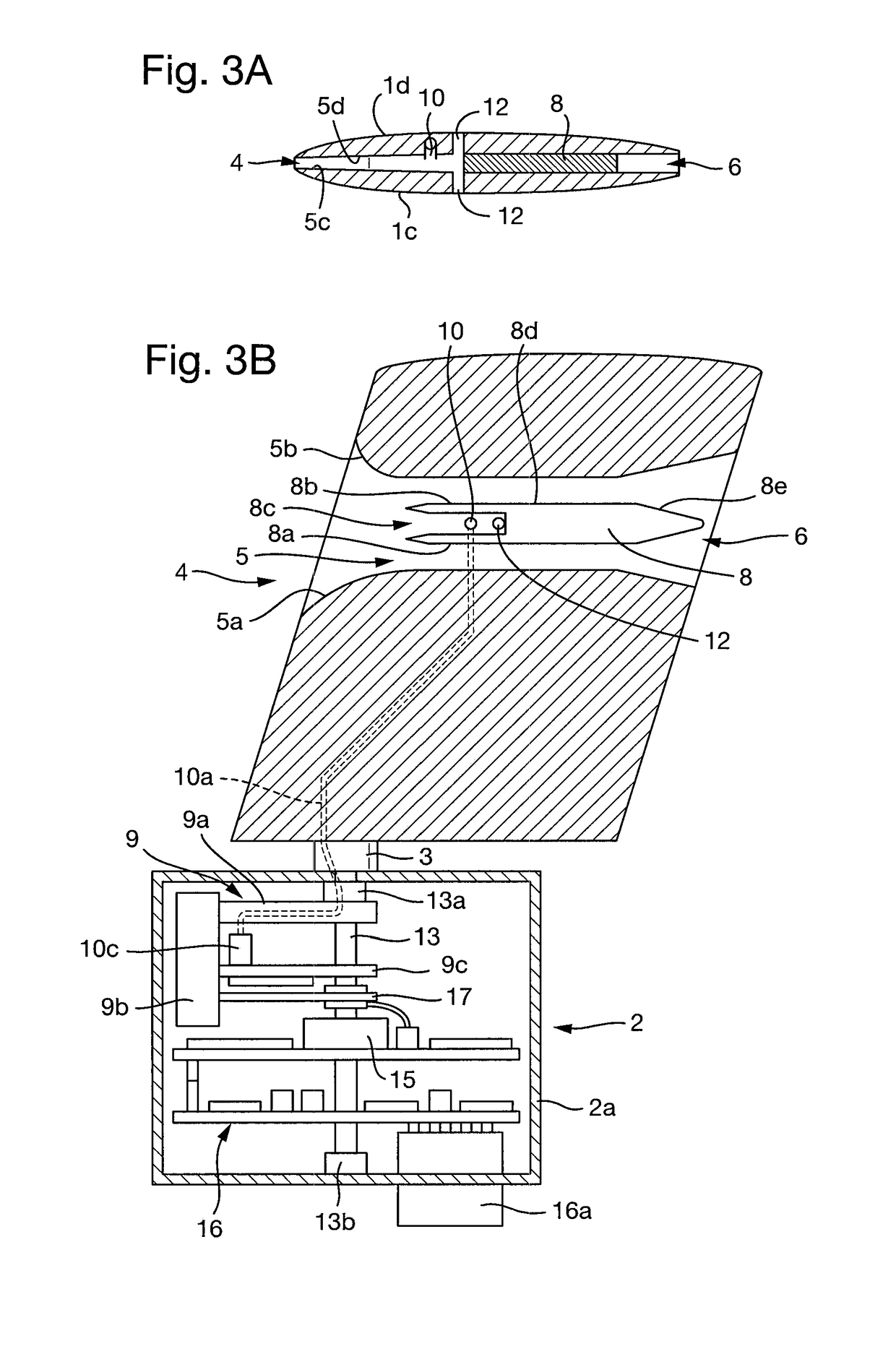Moving-vane angle of attack probe
a technology of moving vane and probe, which is applied in the direction of stators, machines/engines, instruments, etc., can solve the problems of large de-icing power, and a large surface area of integrated sensors, so as to reduce de-icing power, reduce surface area, and efficient feature arrangement
- Summary
- Abstract
- Description
- Claims
- Application Information
AI Technical Summary
Benefits of technology
Problems solved by technology
Method used
Image
Examples
first embodiment
[0092]The first embodiment represents an integrated sensor for determining both the angle of attack, based on the rotational position of the vane, and the total pressure, based on the air pressure in the pitot-tube 8. While it is advantageous to integrate these two sensors into a single assembly, in order to calculate, for example, the Mach number, the static pressure as well as the total pressure must be known. It is therefore particularly advantageous for the moving-vane angle of attack probe to further include static pressure sensors.
[0093]The second embodiment of the invention, shown in FIGS. 4 to 7B, will now be described. The embodiment of FIGS. 4 to 7B is largely the same as the embodiment of FIGS. 1 to 3B, and the same reference numerals for identical features will be adhered to. The moving-vane angle of attack probe of this embodiment differs in that a pitot-static system is incorporated into the vane rather than a pitot-tube. The pitot-static tube is largely the same as th...
second embodiment
[0094]The static pressure systems are ideally to be used to determine the freestream pressure, which is the air pressure upstream of the vane, i.e. before the air pressure has been affected by the movement of an aerodynamic body. However, in reality the static pressure in the region of the vane will be affected by a number of factors. Firstly, the static pressure in the region of the vane will be affected by the movement of the body on which the vane is mounted, for example, the fuselage of a plane. Secondly, the static pressure in the region of the vane will be affected by the way in which the air flows over the vane itself. Finally, the static pressure in the region of the vane will be affected in a scenario in which the angle of the vane lags behind a change in wind direction. As described below, the invention features a number of design considerations made to minimise or correct for these effects on the static pressure.
[0095]The first and second static pressure systems 81, 82 co...
third embodiment
[0104]In the invention, a vane is provided with the first and second static pressure systems only, as shown in FIGS. 8 to 10B.
[0105]In this embodiment, the vane is of substantially the same external shape as in the first two embodiments, but does not have an opening, interior chamber, or exhaust opening. In this embodiment, the first and second static pressure systems 281, 282 comprise first and second manifolds 281c, 282c respectively. The first and second manifolds are cuboidal chambers located inside the vane.
[0106]Each static pressure system 281, 282 further comprises a pair of static ports 281a, 281b, 282a, 282b. The first static pressure system 281 features a first static port 281a, which extends from the first vane surface 1c, through the vane to the first manifold, thereby connecting it to the atmosphere. The first static pressure system 281 further features a second static pressure port 281b which extends from the second vane surface 1d, through the vane to the first manifo...
PUM
 Login to View More
Login to View More Abstract
Description
Claims
Application Information
 Login to View More
Login to View More - R&D
- Intellectual Property
- Life Sciences
- Materials
- Tech Scout
- Unparalleled Data Quality
- Higher Quality Content
- 60% Fewer Hallucinations
Browse by: Latest US Patents, China's latest patents, Technical Efficacy Thesaurus, Application Domain, Technology Topic, Popular Technical Reports.
© 2025 PatSnap. All rights reserved.Legal|Privacy policy|Modern Slavery Act Transparency Statement|Sitemap|About US| Contact US: help@patsnap.com



